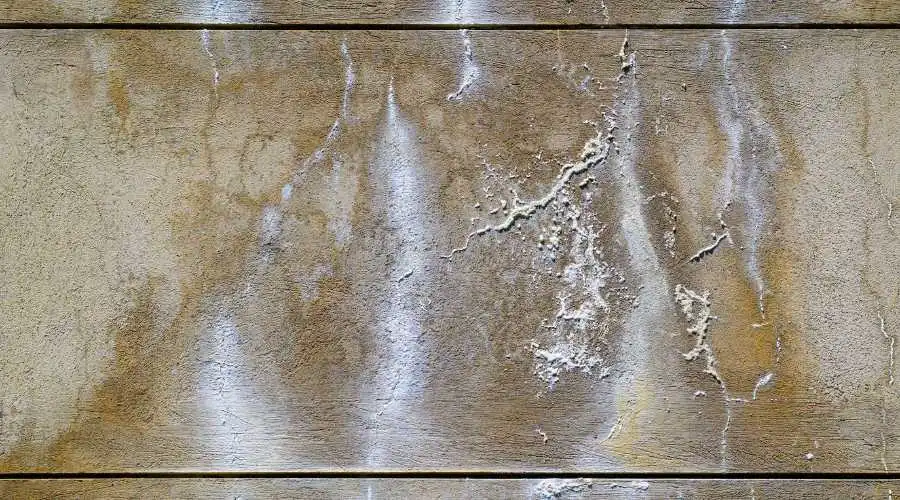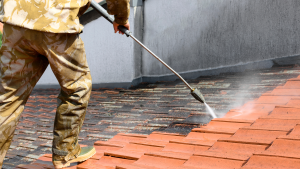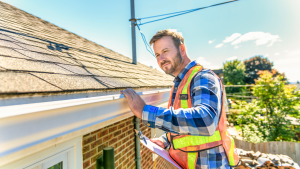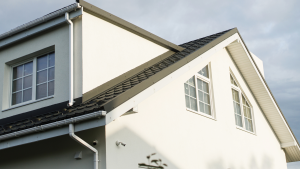Water getting into stucco walls can be a big problem. If it’s not stopped, it may be expensive and cause a great deal of problems. In this article, we’ll talk about how water can get into stucco walls and what you can do to prevent it.
Understanding Water Getting into Stucco
Stucco walls, which look nice, can let water in. It’s important to know how water can go through stucco to protect your home. Let’s learn about how water gets into stucco walls, what happens when it does, and how to fix it.
Water Going Straight In
Stucco is supposed to keep water out if it’s sealed well. But sometimes, things can make it less effective. Water can go straight through stucco because of different reasons, causing problems. If the stucco stays wet all the time, water can go deep into it, creating issues.
Keeping the walls wet constantly, like when sprinklers make them wet, or other sources keep them moist, can let water in over time.
Cracks and Weaknesses
As stucco gets older, it can develop cracks that let water in. Stucco is good at keeping water out when it’s solid and in one piece. But if it cracks, water can get in, causing swelling and more cracks. This makes water go deeper into the stucco.
Cracks can form due to different things, like changes in your home’s structure. Even small cracks outside might not mean big problems inside, but they can let water in, leading to mold and other issues.
Problems with Flashing Installation
Stucco doesn’t cover your whole home; it meets other parts like windows and roofs. At these meeting points, it needs flashing and moisture barriers to keep water out. But if these aren’t installed well, water can get into the stucco at these weak spots. Even a small opening can turn into big damage over time.
Things that Contribute to Water Getting In
- Landscaping Effects – Things outside, like plants and installations, can add to water getting into stucco. Being close to plants, outside installations, and more can impact stucco over time.
- Soil Touching Stucco – If planters and flower beds are too close to the walls, soil can transfer moisture. Soil holds water, and if it touches stucco, it can let moisture in.
- Outside Fixtures – Outdoor lights can make openings in the stucco, and if moisture barriers aren’t put in properly, rainwater can get into the walls.
- Growing Plants – Plants like ivy can stick to stucco and let moisture in. If taken care of, ivy and moss can help stucco a lot.
How to Deal with Water Getting into Stucco
Acting quickly to stop or fix water getting into stucco is crucial. It keeps your property strong and valuable. Here are some good strategies:
- Professional Installation – Have experienced professionals install stucco using the right methods. The right installation is critical to stopping water in the future.
- Flashing Check – Regularly look at and fix flashing around windows, doors, and fixtures. Fixing damaged flashing on time can stop water from going into the stucco.
- Moisture Barriers – Think about putting waterproof barriers under the stucco to add extra protection against water.
- Crack Fixing – Keep an eye on stucco walls for cracks. Fix any openings you see quickly by sealing them with the right caulking to stop more water from getting in.
- Professional Check – Schedule regular checks with stucco experts who can find problems and give you solutions to stop water damage.
Make Preventing Water Getting into Stucco a Priority
Protecting your stucco walls from water is important to keep them looking good and lasting a long time. Ignoring water issues can lead to big damage and expensive repairs. By working with professionals like CMB East Brunswick Stucco & EIFS, you get help from experts in stucco systems, making sure your property looks great.
If you think water is getting into your stucco, contact CMB East Brunswick Stucco & EIFS. Whether you need stucco replaced, treatments, or other siding options, we’re here to keep your property beautiful and strong.
Contact us now and take steps to stop water from getting into your stucco. Remember, investing in prevention means long-term protection for your property. Act now to keep your stucco in good shape for a long time.




